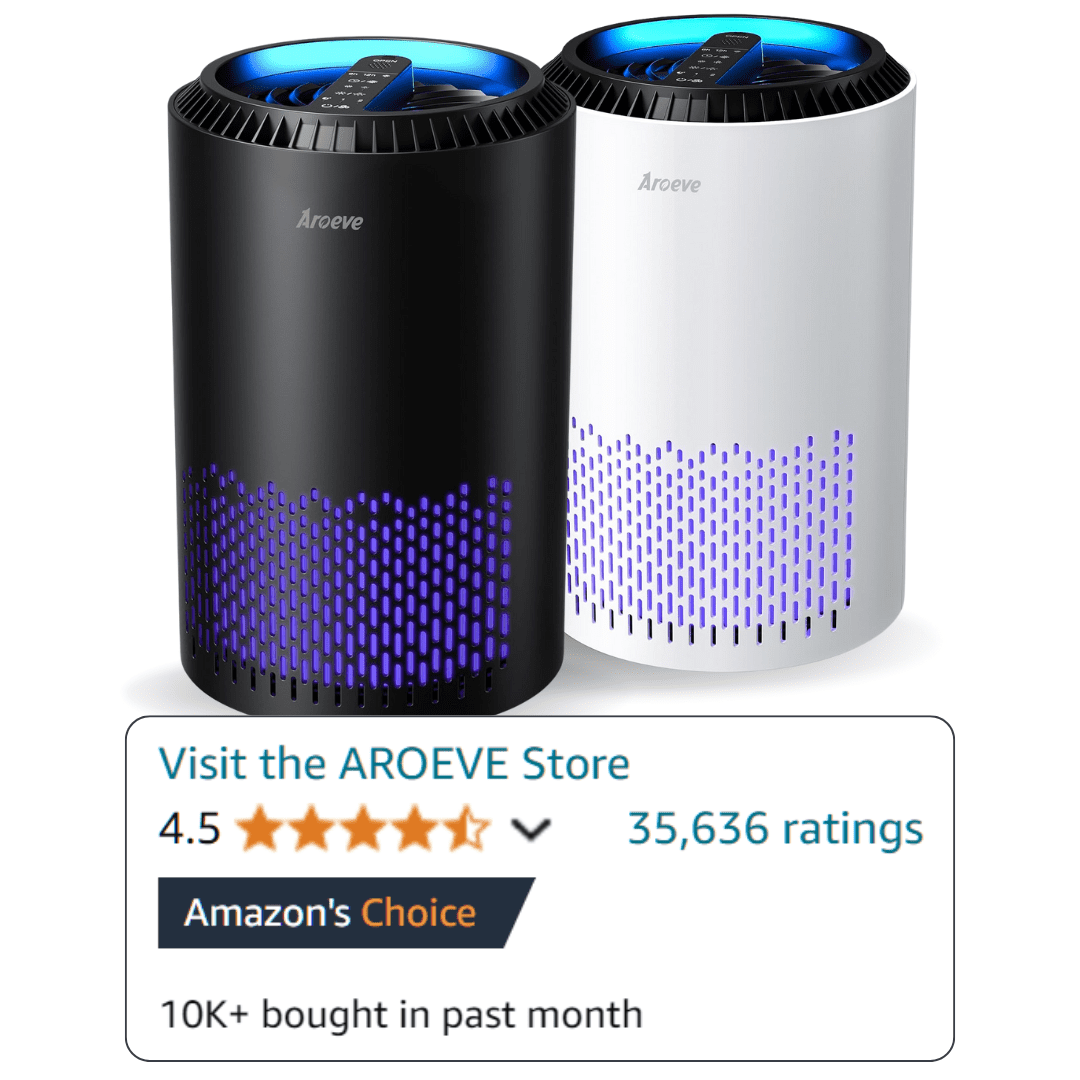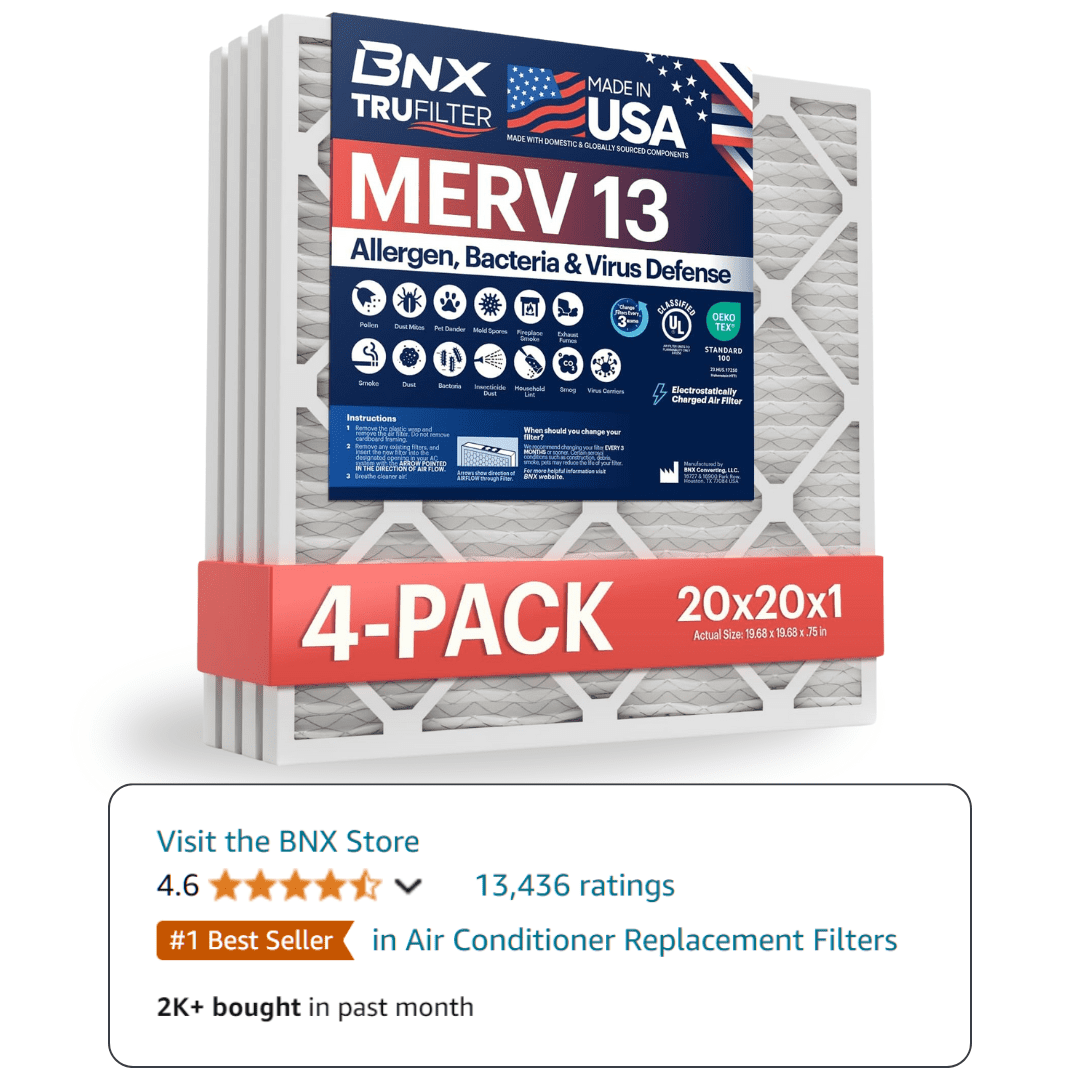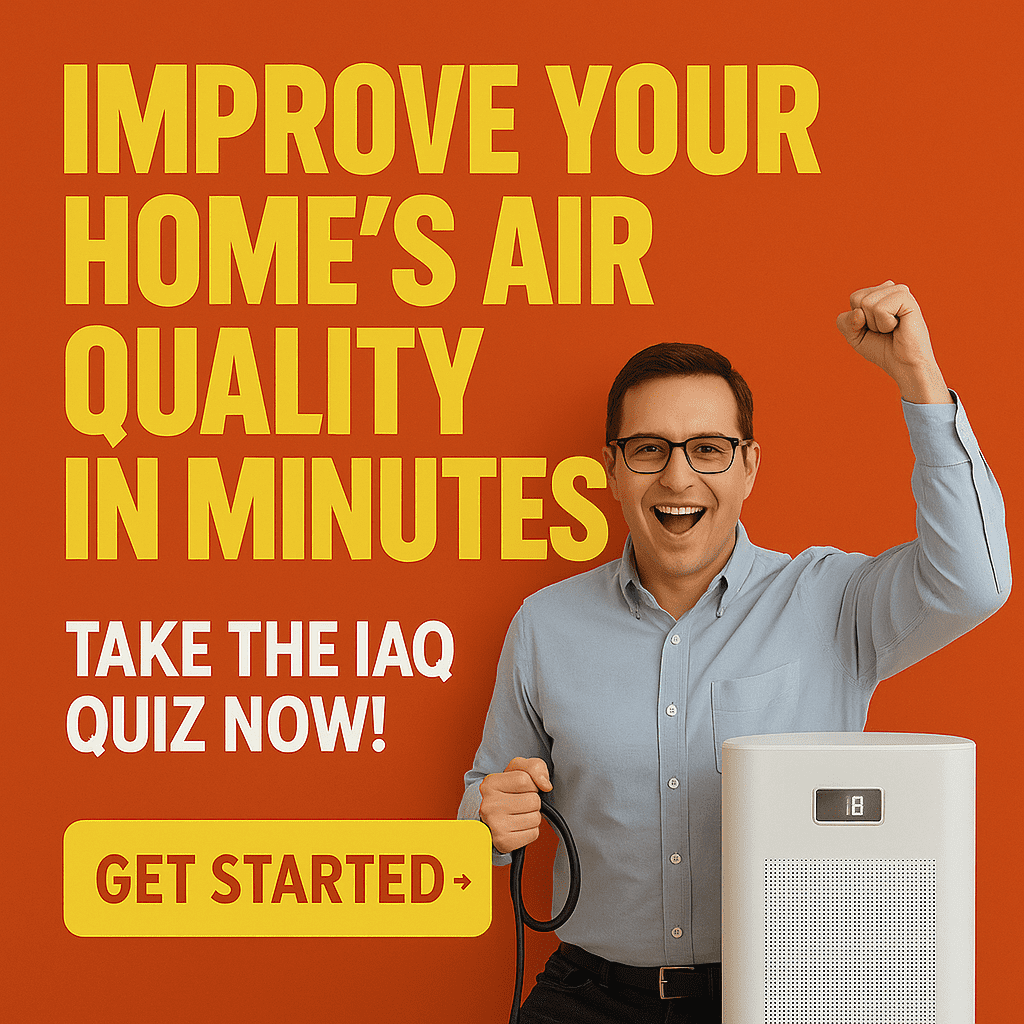What is Automated IAQ Control? (Definition and Core Components)
Automated indoor air quality control systems continuously monitor indoor air parameters and automatically adjust building systems to maintain predetermined air quality standards. Unlike traditional HVAC systems that operate on schedules or manual settings, these systems respond to real-time data from multiple sensors throughout a building.
Key Components of Automated Systems
The foundation of any automated IAQ system includes air quality sensors that measure particulate matter, volatile organic compounds (VOCs), carbon dioxide, humidity, and temperature. These sensors connect to a central controller that processes data and sends commands to HVAC equipment, air purifiers, and ventilation systems.
Modern systems use IoT connectivity to enable remote monitoring and control through smartphone apps or web dashboards. The controller software includes algorithms that learn building patterns and optimize responses based on occupancy, weather conditions, and historical performance data.
Integration protocols like BACnet and Modbus allow different manufacturers’ equipment to communicate seamlessly. This interoperability ensures that sensors from one company can control HVAC equipment from another, providing flexibility in system design and future upgrades.
How Automation Differs from Manual IAQ Management
Manual IAQ management relies on scheduled maintenance, periodic testing, and reactive responses to air quality problems. Building operators might change filters monthly, adjust ventilation seasonally, or respond to complaints about stuffiness or odors.
Automated systems eliminate the guesswork by continuously monitoring conditions and making adjustments in real-time. When CO2 levels rise during a meeting, the system increases ventilation automatically. If outdoor air quality deteriorates due to wildfire smoke, the system switches to recirculation mode and increases filtration efficiency.
The comprehensive IAQ control approaches traditionally require manual coordination between different systems. Automation integrates these strategies into a unified response that optimizes all components simultaneously.
Benefits of Automated Indoor Air Quality Control
Health and Productivity Improvements
Research from the National Institute of Health demonstrates that automated IAQ systems reduce respiratory symptoms by 23% and improve cognitive performance by 15% compared to manually controlled environments. The consistent air quality maintenance prevents the fluctuations that trigger asthma and allergies.
Automated systems respond to pollution events within minutes rather than hours or days. When cooking odors, cleaning chemicals, or outdoor pollutants enter a building, sensors detect the change and immediately increase ventilation or activate purification systems.
The continuous air quality assessment provided by automation ensures that occupants never experience prolonged exposure to poor air conditions that might go unnoticed with manual monitoring.
Energy Efficiency and Cost Savings
Automated systems optimize energy consumption by operating equipment only when needed. Traditional HVAC systems often over-ventilate during low-occupancy periods or under-ventilate when air quality degrades. Automation matches system operation to actual demand, reducing energy waste by 20-35%.
Smart algorithms learn building patterns and pre-condition spaces before occupancy. The system might increase ventilation 30 minutes before employees arrive, ensuring good air quality without running equipment all night. During unoccupied periods, the system maintains minimum ventilation while monitoring for unexpected pollution sources.
Integration with weather data allows systems to take advantage of favorable outdoor conditions. When outdoor air quality is excellent and temperatures are moderate, the system increases fresh air intake and reduces mechanical cooling or heating loads.
Compliance and Documentation Advantages
Automated systems provide continuous documentation of air quality conditions, which proves invaluable for regulatory compliance and liability protection. The system logs all sensor readings, equipment operations, and maintenance alerts, creating a comprehensive record of IAQ management efforts.
Many commercial buildings must meet specific ventilation standards outlined in ASHRAE Standard 62.1. Automated systems ensure continuous compliance by maintaining required ventilation rates and documenting performance. This documentation protects building owners from liability and demonstrates due diligence in providing healthy indoor environments.
Types of Automated IAQ Control Systems
Smart HVAC Integration Systems
These systems integrate directly with existing HVAC equipment, adding sensors and control logic to standard heating and cooling systems. The automation controller communicates with the HVAC system’s existing controls, modifying operation based on air quality data.
Smart thermostats with IAQ capabilities represent the simplest form of HVAC integration. These devices monitor basic parameters like humidity and VOCs, adjusting temperature and ventilation accordingly. More sophisticated systems integrate with variable air volume (VAV) systems, modulating airflow to individual zones based on local air quality conditions.
The mechanical ventilation integration allows precise control of fresh air intake, exhaust rates, and air mixing. Advanced systems can even adjust the position of dampers and the speed of fans to optimize air distribution patterns.
Standalone Air Quality Automation
Standalone systems operate independently of the main HVAC system, controlling dedicated air purifiers, ventilation fans, and humidity control equipment. These systems work well in buildings with older HVAC equipment that lacks integration capabilities.
Portable air purifiers with smart controls can network together to provide whole-building coverage. When one unit detects elevated particle levels, it can signal other units to increase their operation, creating a coordinated response throughout the building.
Dedicated ventilation systems with automated controls can supplement existing HVAC systems. These might include energy recovery ventilators (ERVs) that automatically adjust fresh air intake based on indoor and outdoor conditions, or exhaust fans that activate when humidity or odor levels exceed thresholds.
IoT-Based Monitoring and Control
IoT systems use wireless sensors throughout a building to create a comprehensive monitoring network. These sensors communicate with cloud-based control systems that can manage equipment across multiple buildings from a central location.
The distributed sensor approach provides detailed information about air quality variations within a building. A sensor near the kitchen might detect cooking odors and activate local exhaust fans, while sensors in conference rooms monitor CO2 levels and adjust ventilation for each space independently.
Cloud connectivity enables remote monitoring and control, allowing building managers to oversee multiple properties from a single dashboard. The system can send alerts about equipment failures, filter replacement needs, or unusual air quality events, enabling proactive maintenance and rapid response to problems.
Implementation Guide: Setting Up Automated IAQ Control
Assessment and Planning Phase
Begin with a comprehensive assessment of current IAQ conditions and existing building systems. Professional IAQ testing should measure baseline conditions for particulates, VOCs, CO2, humidity, and temperature throughout the building. This data establishes performance targets for the automated system.
Evaluate existing HVAC equipment for automation compatibility. Modern systems with digital controls integrate more easily than older pneumatic or basic electric systems. Document current control sequences, sensor locations, and equipment specifications to determine integration requirements.
Develop a phased implementation plan that prioritizes critical areas and high-impact improvements. Start with spaces that have the most occupants or the greatest air quality challenges, then expand the system to other areas as budget and experience allow.
Equipment Selection and Installation
Choose sensors based on the specific pollutants and conditions relevant to your building. Office buildings typically need CO2, particulate, and VOC sensors, while industrial facilities might require additional gas-specific sensors. Ensure sensors meet accuracy standards and provide the communication protocols needed for your control system.
Select controllers that can handle your building’s complexity and future expansion needs. Simple residential systems might use a single controller, while large commercial buildings require distributed control with multiple processors and redundant communication paths.
The proper filtration in automated systems requires upgrading to higher-efficiency filters that can respond to variable airflow demands. Automated systems often increase fan speeds during high pollution events, requiring filters that maintain efficiency under varying conditions.
Configuration and Calibration
Program control sequences that respond appropriately to different air quality scenarios. Define setpoints for each monitored parameter and specify the system response when thresholds are exceeded. For example, when CO2 levels reach 1000 ppm, the system might increase ventilation by 25%.
Calibrate sensors according to manufacturer specifications and verify accuracy with reference instruments. Establish maintenance schedules for sensor cleaning and calibration to ensure continued accuracy. Most sensors require monthly cleaning and annual calibration to maintain performance.
Test all control sequences under various conditions to verify proper operation. Simulate high occupancy, pollution events, and equipment failures to ensure the system responds correctly. Document all settings and create operator training materials for ongoing system management.
Cost-Benefit Analysis and ROI Calculations
Initial Investment Breakdown
Basic residential automation systems start around $3,000-$5,000 for sensor packages and control integration. This includes 3-5 sensors, a central controller, and integration with existing HVAC equipment. Professional installation adds $1,500-$3,000 depending on system complexity.
Commercial systems range from $15,000-$50,000 for small office buildings up to $200,000+ for large facilities with complex HVAC systems. The cost includes sensors for each zone, distributed controllers, software licensing, and professional commissioning.
Ongoing costs include sensor maintenance ($200-$500 annually), software updates, and periodic calibration services. These maintenance costs are typically offset by reduced energy consumption and extended equipment life.
Long-term Savings and Payback Period
Energy savings from automated IAQ systems typically range from 15-30% of total HVAC operating costs. A building spending $50,000 annually on heating and cooling might save $7,500-$15,000 per year through optimized operation.
Reduced maintenance costs result from systems that operate equipment only when needed and provide early warning of problems. Automated systems can extend filter life by 20-40% through optimized airflow management and reduce HVAC equipment wear through gentler operation cycles.
Health-related savings include reduced sick leave, improved productivity, and lower healthcare costs. Studies show that buildings with good IAQ experience 6-9% fewer sick days and 8-11% higher productivity scores.
Most systems achieve payback within 2-4 years when energy savings, maintenance reductions, and productivity improvements are combined. Simple residential systems often pay for themselves within 18-24 months through energy savings alone.
ROI Calculator Tool
Calculate your potential return on investment by entering your building’s square footage, current energy costs, and occupancy levels. The calculator considers energy savings, maintenance reductions, and productivity improvements to estimate payback period and lifetime savings.
Factor in utility rebates and tax incentives that may be available for energy-efficient building improvements. Many utilities offer rebates for automated controls that reduce peak demand or improve overall efficiency.
Real-World Case Studies and Success Stories
Commercial Office Building Implementation
A 50,000 square foot office building in Phoenix installed an automated IAQ system that reduced energy costs by $18,000 annually while improving tenant satisfaction scores by 35%. The system uses 15 sensors throughout the building to monitor CO2, particulates, and VOCs, automatically adjusting ventilation and filtration based on real-time conditions.
During wildfire season, the system automatically switches to recirculation mode when outdoor air quality deteriorates, protecting occupants from smoke infiltration. The building owner reports 40% fewer tenant complaints about air quality and a 25% reduction in HVAC maintenance calls.
The system paid for itself in 2.8 years through energy savings and reduced maintenance costs. Tenant retention improved significantly, with several companies specifically citing air quality as a factor in lease renewals.
Educational Facility Automation
A K-12 school district implemented automated IAQ control in 12 buildings, focusing on classroom CO2 management and filtration optimization. The system monitors 180 classrooms and automatically increases ventilation when CO2 levels exceed 800 ppm.
Student test scores improved by an average of 4% in buildings with automated systems compared to control schools with manual HVAC operation. Teacher satisfaction surveys showed significant improvements in comfort and air quality ratings.
The district saved $125,000 annually in energy costs while maintaining better air quality than previous manual operation. The system also provided valuable data during the COVID-19 pandemic, demonstrating compliance with enhanced ventilation requirements.
Healthcare Environment Control
A 200-bed hospital installed automated IAQ control to maintain strict air quality standards required for patient safety. The system monitors 24 different parameters and maintains positive pressure relationships between rooms to prevent contamination spread.
The automation reduced hospital-acquired infection rates by 15% through consistent air quality maintenance and proper pressure relationships. Energy costs decreased by 22% through optimized operation of the hospital’s complex HVAC systems.
Staff productivity improved measurably, with nurses reporting better comfort and fewer respiratory symptoms. The system’s documentation capabilities proved essential during Joint Commission inspections, providing detailed records of air quality compliance.
Choosing the Right Automated IAQ Solution
Building Size and Type Considerations
Residential buildings typically need 3-8 sensors depending on size and layout. Focus on main living areas, bedrooms, and spaces with potential pollution sources like kitchens and basements. Simple systems can integrate with existing smart thermostats or operate standalone air purifiers and ventilation fans.
Small commercial buildings (under 10,000 square feet) benefit from zone-based systems with 5-15 sensors. These systems can integrate with packaged HVAC units or split systems, providing automated control without major equipment replacement.
Large commercial and institutional buildings require comprehensive systems with 20+ sensors and distributed control architecture. These systems integrate with building automation systems (BAS) and provide detailed zone control, equipment optimization, and enterprise-level reporting.
Budget and Feature Comparison
Entry-level systems focus on basic monitoring and simple control responses. These systems typically monitor CO2 and particulates, adjusting ventilation and filtration accordingly. Costs range from $2,000-$8,000 for residential applications.
Mid-range systems add humidity control, advanced filtration management, and smart home integration strategies. These systems can coordinate multiple IAQ strategies and provide detailed reporting and analytics. Commercial applications range from $10,000-$40,000.
Premium systems include predictive analytics, machine learning optimization, and integration with enterprise building management systems. These systems can predict air quality problems before they occur and optimize operation for multiple objectives including energy efficiency, comfort, and health. Costs range from $50,000-$200,000+ for large facilities.
Professional vs DIY Installation
DIY installation works well for simple residential systems that integrate with existing smart home platforms. Basic sensor networks and smart air purifiers can be installed by homeowners with moderate technical skills. However, integration with HVAC systems typically requires professional installation to ensure proper operation and warranty compliance.
Professional installation becomes essential for commercial systems and complex residential applications. HVAC contractors with IAQ expertise can properly integrate sensors with existing equipment, program control sequences, and commission the system for optimal performance.
The National Air Filtration Association provides certification programs for contractors specializing in IAQ systems. Choose installers with specific experience in automated controls and IAQ applications rather than general HVAC contractors.
Consider hybrid approaches where professionals handle HVAC integration while building operators manage sensor placement and system configuration. This approach reduces installation costs while ensuring critical safety and performance requirements are met.




